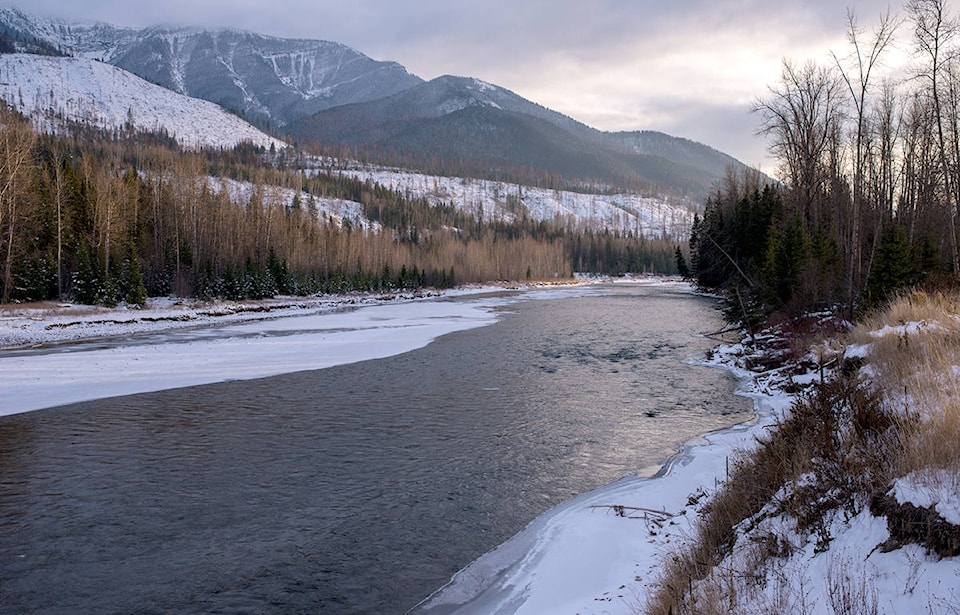The B.C. Ministry of Environment has moved to quash fears mining pollution limits will be raised in the Elk Valley.
Earlier this month, The Free Press reported Wildsight’s concerns that proposed changes to Teck Coal’s Area Based Management Plan (ABMP) would include weakening water quality targets.
The mining company is in the process of finalizing the 2019 Implementation Plan Adjustment (IPA), which revises the initial mitigation plan developed to achieve targets set in the Elk Valley Water Quality Plan (EVWQP) and Permit 107517.
At the time, Wildsight Science and Communications Analyst Lars Sander-Green said he believed Teck wanted the Province to approve higher pollution limits that wouldn’t be safe for fish and other aquatic life.
However, a Ministry of Environment spokesman has confirmed that is not the case.
“There is no plan to lower site performance objectives (SPOs) for contaminants of concern in the Elk Valley and Koocanusa Reservoir,” the spokesman said in a statement to The Free Press.
“The IPA deals with the scheduling of work needed to achieve the ABMP’s objectives and implementing the technology needed to treat selenium and nitrate.”
The ABMP aims to stabilize and reverse increasing concentrations of selenium, sulphate, nitrate, and cadmium in surface water, with Active Water Treatment Facilities (AWTFs) and clean water diversions identified as tools to achieve this.
However, in the IPA summary published in February, Teck admitted that it won’t consistently meet SPOs until 2023 when the Fording River and Elkview AWTFs are commissioned.
Prior to the commissioning of these treatment facilities, selenium and nitrate concentrations are predicted to be seasonally above SPOs at four of the seven order stations located throughout the Elk Valley and at Lake Koocanusa.
The proposed IPA delays the opening of AWTFs and, in some cases, reduces their total treatment capacity.
When asked what the ramifications of these delays and Teck’s inability to meet SPOs are, the Ministry responded: “Delays in construction of some plants were the result of previous setbacks in the implementation of active water treatment that required a review of the treatment process design. These setbacks have been overcome and construction of the next plant at Fording River Operations is underway.”
Wildsight has not been consulted on the IPA and criticized Teck for not seeking feedback from the community.
According to the Ministry, input into the draft IPA was provided by the Ministry of Environment and Climate Change Strategy, the Ministry of Energy, Mines and Petroleum Resources, and representatives of the Ktunaxa Nation Council (KNC) during seven review meetings.
Teck told the Ministry other meetings with communities of interest also took place.
“Feedback submitted during this review included technical questions about the assumptions used in models and effects assessments, suggestions for looking at alternative scheduling and sequencing of mitigations, and questions about the use of alternative technologies such as saturated rock fills,” said the Ministry spokesman.
He added the Province has reviewed the IPA throughout its development to ensure it meets or exceeds permit requirements and protects human health and the environment.
The plan is expected to be finalized by this summer, as per the requirements of the Mines Act permits.
The Ministry spokesman said the IPA summary has been posted publicly and members of the public are welcome to provide feedback to Teck’s Manager of Social Responsibility Nic Milligan via 250-425-3335 or Nic.milligan@teck.com.
Despite its involvement in the IPA process, the KNC has joined other First Nations groups in lobbying the U.S. and Canadian governments for a lower selenium limit in the Koocanusa Reservoir, a transboundary waterway.
The KNC, Kootenai Tribe of Idaho and Confederated Salish and Kootenai Tribe are calling for a lower selenium criteria to be established until a longer-term target is set in 2020 amid concerns about impacts on multiple fish species.
They are members of the Lake Koocanusa Monitoring and Research Working Group (LKMRWG), which was established in 2014 as a forum for discussing and recommending future site-specific criteria and water quality guidelines for the reservoir, as well as cumulative effects.
“B.C. is committed to amending the long-term selenium target of 2 ug/L (micrograms per litre) in Lake Koocanusa should sound science and the results of the LKMRWG’s work identify a more appropriate target that is suitably protective of aquatic ecosystem health,” said the Ministry spokesman.
“The LKMRWG is targeting 2020 to deliver recommendations for a revised selenium target to the LKMRWG Steering Committee.
“The LKMRWG’s Steering Committee will use the recommendations as the basis to determine new selenium guidelines for Lake Koocanusa. Completion and adoption of new selenium guidelines for Lake Koocanusa is currently targeted for 2020-2022.”
